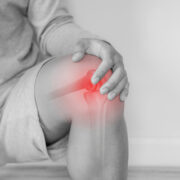On Arthritis and Why Joints Degrade
On Arthritis and Why Joints Degrade
By Bill Amos, PT
Arthritis is a combination of 2 Latin words meaning “joint” (arth) and “inflammation” (itis). The joint is the surface of a bone, which is moved by the muscles. No matter how much or little the joint is supposed to move, the joint surfaces should be well matched to each other to move smoothly against each other. If not, then the rough surfaces will grind against each other through the cartilage into the bone proper.
If you can think about the grand total of each joint’s range of motion (ROM) adding all the joints altogether, one may consider this to be the universe of all joint motion of the body.
Now, another technical term: vector. This is the amount of force AND the direction in which the force is moving. As in shooting pool, if you shoot the cue ball against the 8 ball, but not exactly centered, it will veer off at an angle. You’ve just given a new vector of force and direction to the 8 ball. There are generally multiple muscles attached to any give bone, creating multiple vectors of force. Forces need to equal ROM. This is an equation the body needs to balance out constantly.
If you think of the total of the force vectors involved in moving the body, you may be able to see that if you reduce some of the available ROM, this requires the force vectors, spread over the universe of the body, to increase overall. If this doesn’t balance, this causes the muscles to turn on, going into spasm. Its switch is locked “on” and has no “off” setting. That is, more forces (pressure) are placed on each joint. The underlying complaints we observe in patients are, I feel, due to an increase in muscle spasm creating a reduction of total available ROM. More friction equals more pain.
My contention is that the symptoms are perhaps coming from where the greater amount of force vectors are now being placed—at the weakest link within the universe of the ROM.
My thought about arthritis is this: The prime CAUSE of arthritis may not necessarily be at the point of your pain. If I can figure that out, I can attack the cause to correct the problem. Karel Lewitt, D.Sc., of Prague, wrote, “If you concentrate your work on the area of the pain, you are already lost.” Where is the real problem that has caused the symptoms? That’s the question I have to answer for each of my patients.
Next, take the opposite of that statement. If you can add AROM anywhere in the system, the total force vectors of the entire system diminish. Again, a balance is required by the body. This can allow the problem, that is, the weak link, to ease. And this may be why it’s been found that almost any kind of movement is helpful in reducing pain overall, as the body is warmed up and looser, having less friction and increased ease of movement. But this doesn’t address the true problem.
In a patient who has multiple spasms, some small but important portion of those total vector forces is a compression force. It squeezes the joint surfaces together causing more friction, making it harder to move. If that joint can move with less friction, this can reduce the symptoms. If you simply approach the universe of ROM and force vectors and change any aspect of it, that universe changes also, which can change (one hopes to reduce) the symptoms as well.
Reinstalling the off switch on a muscle spasm is how I successfully treat arthritis. If the joint surface has already been worn down to bone rubbing on bone, most likely, you are going to need a joint replacement—but not necessarily. Sometimes, I’ve been able to help those, at least for a few years.
It’s taken me 41 years to put together this jigsaw puzzle so at least some portion of the picture is recognizable. I don’t claim to have put all the pieces together, but at least I think I know where the corners and borders are.
* * *
If you are struggling with arthritis or other joint pain, please contact our office to discuss further with a free 20-minute consultation: 301-881-2898 or email doctorhelena@gmail.com.


